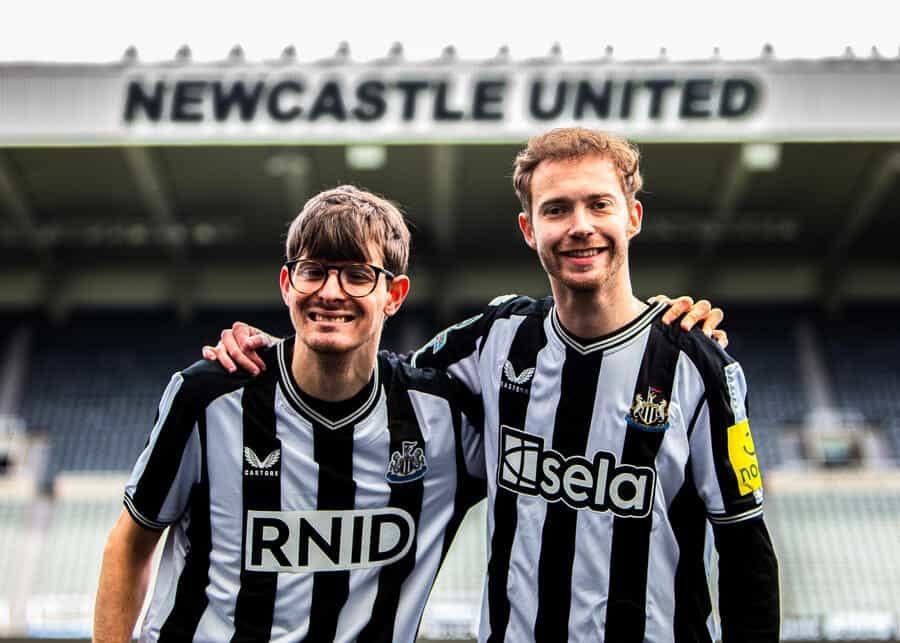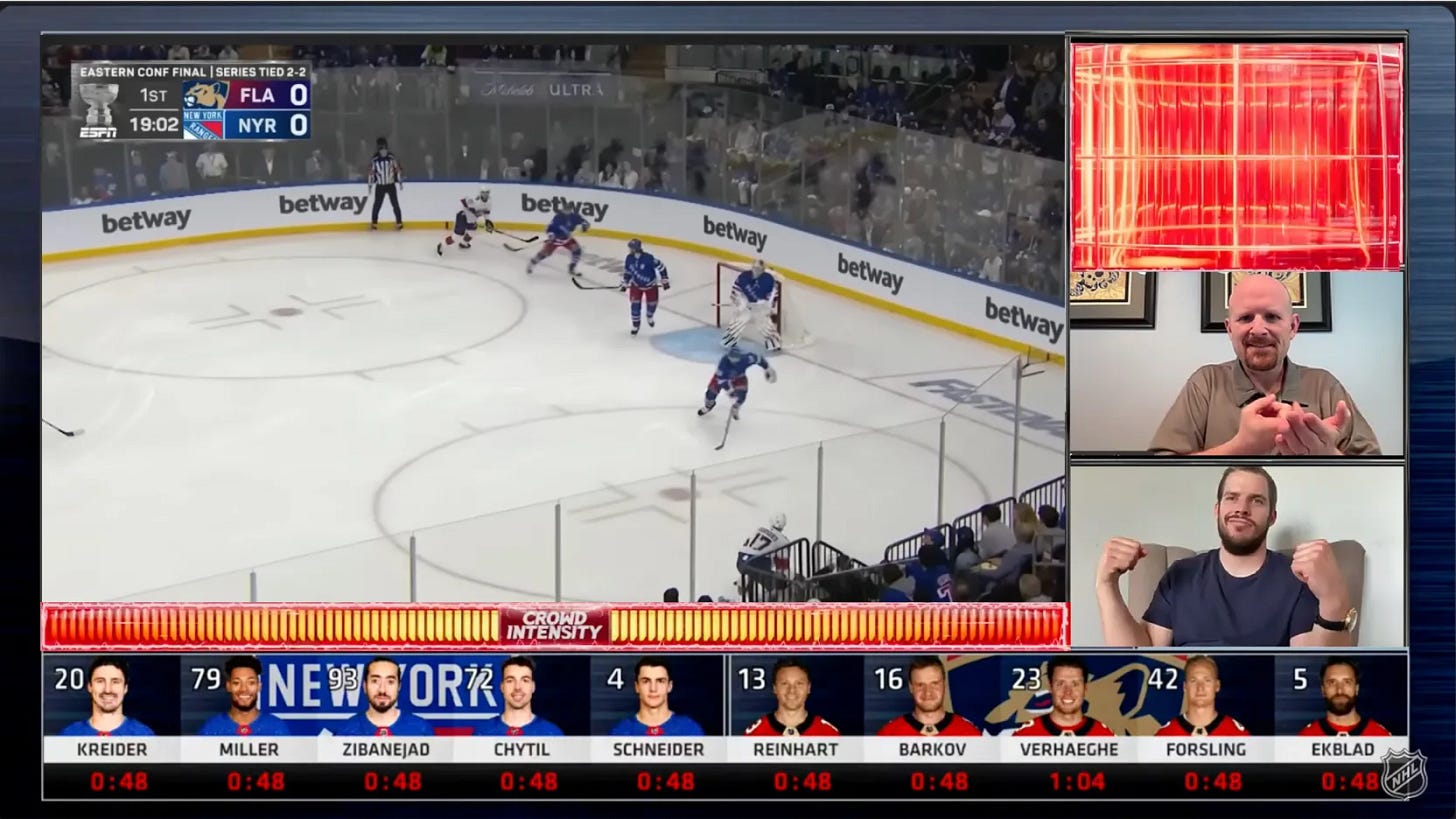Breaking Sound Barriers: Making Sports Accessible for Deaf Fans
Emerging Solutions Bridging the Audio Gap in Live Sports for Deaf Sports Fans
Hello sports tech enthusiasts 👋🏼 Welcome to Regen Sports, your twice-weekly deep dive into the intersection of sports and technology. Every Monday, catch up on the week's most important developments in sports innovation, and every Thursday, explore in-depth analysis of trends, companies, and technological breakthroughs reshaping the future of sports.
It's difficult to pinpoint an exact number of deaf sports fans globally, but studies estimate that a significant portion of the population with hearing loss enjoys sports. Sheffield Wire reports that one in five people have hearing loss, meaning a large stadium could potentially have thousands of fans with hearing impairments. Perhaps more telling is survey data indicating that 29% of fans with hearing loss have chosen not to attend games due to accessibility concerns—a clear indicator of unmet demand in the sports entertainment market.
While the pace of innovation for deaf sports accessibility may not yet match the developments we've seen for blind fans, meaningful progress is being made across multiple fronts. From haptic technology that translates crowd energy into physical sensations to real-time captioning systems and sign language broadcasting, the sports industry is beginning to recognise and address the unique needs of deaf and hard-of-hearing fans.
The challenge for deaf fans extends beyond simply hearing commentary or crowd noise—it encompasses the full sensory experience that makes live sports compelling. The collective gasp of anticipation, the roar of celebration, the rhythmic chants that unite thousands of voices—these audio elements have traditionally been inaccessible to deaf fans, creating a barrier to full participation in the live sports experience.
Last week we talked about the progress being made with sports tech innovations for blind fans, and now we look at what progress is being made for deaf sports fans.
THE CURRENT LANDSCAPE
Limited but Growing Solutions
As things currently stand, there aren't many companies executing comprehensive solutions specifically for deaf fans, though several pioneering initiatives show promise. The organisations leading this space include XRAI, UK Deaf Sport, and Sela, each approaching accessibility from different technological angles.
XRAI, a technology company, has partnered with UK Deaf Sport to provide real-time subtitles at live events, making commentary and announcements accessible for deaf individuals. This collaboration represents one of the few dedicated efforts to bring professional-grade captioning technology into sports venues in real-time.
Sela, a sponsor of Newcastle United, launched an innovative haptic shirt that allowed deaf fans to feel the atmosphere of a live football match (the Newcastle 4-0 Tottenham game, which was a painful watch for me personally), including the physical sensation of crowd reactions. This approach recognises that deaf fans aren't just missing spoken information—they're missing the emotional energy that audio contributes to the live sports experience.
UK Deaf Sport works more broadly to improve accessibility for deaf and hard-of-hearing people in sports, focusing on developing inclusive opportunities at local levels and advocating for systemic change across the sports industry.
Image source: THIIS Magazine
Stadium Infrastructure Developments
Several major stadiums have begun implementing accommodations for deaf fans, though these efforts vary significantly in scope and sophistication. Many large sports arenas in the U.S. and globally are upgrading accessibility through both infrastructure improvements and digital solutions.
Mercedes-Benz Stadium in Atlanta offers assistive listening devices and closed captioning handhelds for all events, representing a comprehensive approach to serving fans with varying degrees of hearing loss. Madison Square Garden in New York provides open and closed captions for sports commentary, as well as sign language interpreting upon request for major events.
The Crypto.com Arena in Los Angeles delivers closed captions and assistive listening devices, with sign language interpreters available for events, while AT&T Stadium in Arlington features handheld captioning devices, assistive listening, and interpreter services. Fenway Park in Boston supplies closed captioning on video boards and sign language interpreters for pre-game events, acknowledging that accessibility extends beyond the game itself to the full event experience.
These venues enable deaf fans to access real-time captions, sign language interpreting, and assistive listening devices, often integrated through mobile apps and stadium-wide Wi-Fi networks.
INNOVATIVE SOLUTIONS EMERGING
Image source: THIIS Magazine
Haptic Technology Breakthroughs
The most exciting developments in deaf sports accessibility center around haptic technology that translates audio experiences into physical sensations. CuteCircuit's Sound Shirt represents a significant advancement in this field, featuring a haptic wearable that translates sound frequencies into touch patterns across the wearer's body.
The technology allows deaf fans to experience the rhythmic patterns of crowd chants, the intensity of applause, and even the distinct audio signatures of different types of plays or scoring events. Users report that the shirt helps them feel connected to the collective energy of the crowd in ways they never experienced before, creating a more immersive and emotionally engaging live sports experience.
Broadcasting Innovation
The National Hockey League made headlines with its introduction of "NHL in ASL" for the Stanley Cup Finals, featuring full American Sign Language commentary by deaf broadcasters. This initiative went beyond simple interpretation, incorporating visual cues for crowd noise and game atmosphere that enhanced the at-home experience for deaf fans.
The broadcast innovation represents a shift from treating deaf accessibility as an accommodation to recognising it as an opportunity for creative, engaging content that serves a specific community with dedicated programming designed from the ground up for their needs.
Advocacy and Awareness Campaigns
PRISM Sport + Entertainment, part of VML, launched the "Unsilence The Crowd" campaign, raising awareness about deaf fan experiences and advocating for better accessibility solutions across sports venues. The campaign has been instrumental in bringing attention to the gap between current accessibility offerings and the actual needs of deaf sports fans.
Organisations like RNID (Royal National Institute for Deaf People) have provided crucial research and advocacy support, collaborating with venues and technology providers to validate solutions and raise awareness about the deaf fan experience.
THE BUSINESS OPPORTUNITY
The market opportunity for deaf sports accessibility, while perhaps smaller than that for blind fans, represents significant untapped potential. With one in five people experiencing some degree of hearing loss, and survey data showing that 29% of fans with hearing loss avoid attending games due to accessibility concerns, venues have clear incentive to address these barriers.
Early adopters like Newcastle United, through their partnership with Sela, have seen positive engagement from deaf fan communities and valuable brand association with innovation and inclusion. The haptic shirt initiative has generated significant media coverage and social media engagement, demonstrating that accessibility innovations can also serve as powerful marketing and brand differentiation tools.
As technology costs decrease and awareness increases, the business case for comprehensive deaf accessibility solutions becomes increasingly compelling, particularly as younger demographics place higher value on inclusive brand experiences.
Image source: NHL
LOOKING AHEAD
The future of deaf sports accessibility appears promising, though still in earlier stages compared to solutions for blind fans. Several trends suggest accelerating progress in coming years.
Advanced haptic technology continues to evolve, with potential for more sophisticated wearables that can differentiate between types of crowd reactions, game events, and even individual player movements. Integration with existing stadium Wi-Fi and mobile app infrastructure could allow for more seamless delivery of real-time captioning and sign language interpretation.
The success of "NHL in ASL" may inspire other leagues to develop dedicated deaf-accessible broadcasting content, potentially creating new revenue streams while serving underserved fan communities.
Major venue renovations increasingly incorporate universal design principles from the planning phase, suggesting that future stadiums will integrate deaf accessibility solutions as standard features rather than add-on accommodations.
FINAL THOUGHTS 💭
While progress in deaf sports accessibility may not yet match the progressive innovations we've seen for blind fans, the foundation for significant advancement is clearly being established. The combination of haptic technology, real-time captioning systems, and dedicated broadcasting content represents a multi-faceted approach that addresses different aspects of the deaf fan experience.
What's particularly encouraging is the recognition that deaf accessibility isn't just about providing information—it's about creating emotional connection and shared experience. The haptic technologies that let fans feel crowd energy and the sign language broadcasts that provide culturally appropriate commentary both acknowledge that accessibility should enhance, not diminish, the fan experience.
As awareness grows and technology costs decrease, we can expect to see more comprehensive solutions that serve deaf and hard-of-hearing sports fans with the innovation and respect they deserve. The initiatives we've explored represent just the beginning of what promises to be a significant transformation in sports accessibility.
Track the Trends. Spot the plays. Shape the game.
Thanks for reading,
Dean
P.S. If you found this newsletter valuable, please share it with others who might benefit from these insights. The sports tech industry grows stronger when we learn together.






